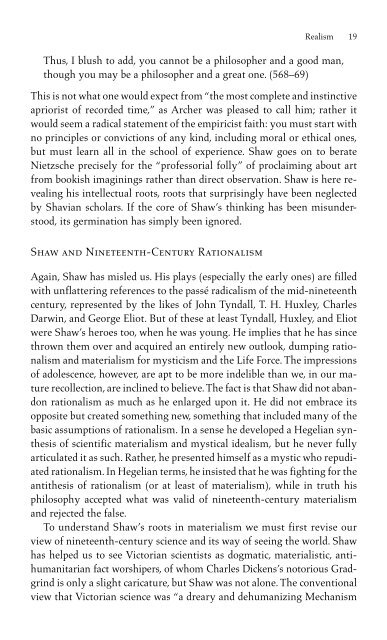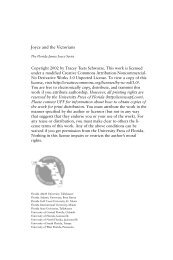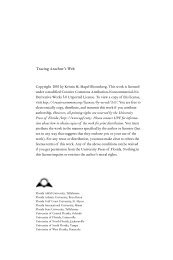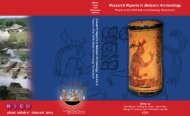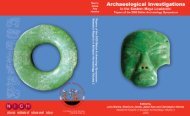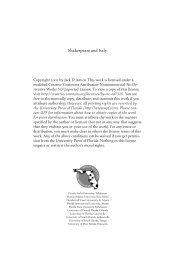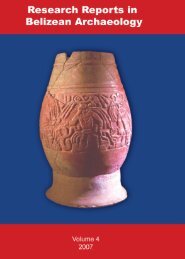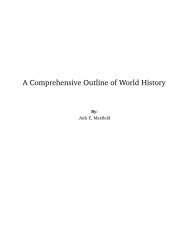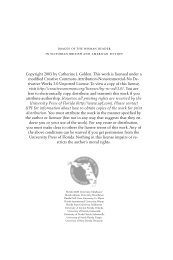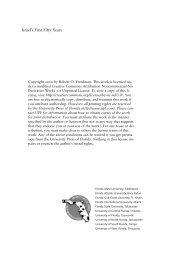Bernard Shaw's Remarkable Religion: A Faith That Fits the Facts
Bernard Shaw's Remarkable Religion: A Faith That Fits the Facts
Bernard Shaw's Remarkable Religion: A Faith That Fits the Facts
Create successful ePaper yourself
Turn your PDF publications into a flip-book with our unique Google optimized e-Paper software.
Realism 19<br />
Thus, I blush to add, you cannot be a philosopher and a good man,<br />
though you may be a philosopher and a great one. (568–69)<br />
This is not what one would expect from “<strong>the</strong> most complete and instinctive<br />
apriorist of recorded time,” as Archer was pleased to call him; ra<strong>the</strong>r it<br />
would seem a radical statement of <strong>the</strong> empiricist faith: you must start with<br />
no principles or convictions of any kind, including moral or ethical ones,<br />
but must learn all in <strong>the</strong> school of experience. Shaw goes on to berate<br />
Nietzsche precisely for <strong>the</strong> “professorial folly” of proclaiming about art<br />
from bookish imaginings ra<strong>the</strong>r than direct observation. Shaw is here revealing<br />
his intellectual roots, roots that surprisingly have been neglected<br />
by Shavian scholars. If <strong>the</strong> core of Shaw’s thinking has been misunderstood,<br />
its germination has simply been ignored.<br />
Shaw and Nineteenth-Century Rationalism<br />
Again, Shaw has misled us. His plays (especially <strong>the</strong> early ones) are filled<br />
with unflattering references to <strong>the</strong> passé radicalism of <strong>the</strong> mid-nineteenth<br />
century, represented by <strong>the</strong> likes of John Tyndall, T. H. Huxley, Charles<br />
Darwin, and George Eliot. But of <strong>the</strong>se at least Tyndall, Huxley, and Eliot<br />
were Shaw’s heroes too, when he was young. He implies that he has since<br />
thrown <strong>the</strong>m over and acquired an entirely new outlook, dumping rationalism<br />
and materialism for mysticism and <strong>the</strong> Life Force. The impressions<br />
of adolescence, however, are apt to be more indelible than we, in our mature<br />
recollection, are inclined to believe. The fact is that Shaw did not abandon<br />
rationalism as much as he enlarged upon it. He did not embrace its<br />
opposite but created something new, something that included many of <strong>the</strong><br />
basic assumptions of rationalism. In a sense he developed a Hegelian syn<strong>the</strong>sis<br />
of scientific materialism and mystical idealism, but he never fully<br />
articulated it as such. Ra<strong>the</strong>r, he presented himself as a mystic who repudiated<br />
rationalism. In Hegelian terms, he insisted that he was fighting for <strong>the</strong><br />
anti<strong>the</strong>sis of rationalism (or at least of materialism), while in truth his<br />
philosophy accepted what was valid of nineteenth-century materialism<br />
and rejected <strong>the</strong> false.<br />
To understand Shaw’s roots in materialism we must first revise our<br />
view of nineteenth-century science and its way of seeing <strong>the</strong> world. Shaw<br />
has helped us to see Victorian scientists as dogmatic, materialistic, antihumanitarian<br />
fact worshipers, of whom Charles Dickens’s notorious Gradgrind<br />
is only a slight caricature, but Shaw was not alone. The conventional<br />
view that Victorian science was “a dreary and dehumanizing Mechanism


